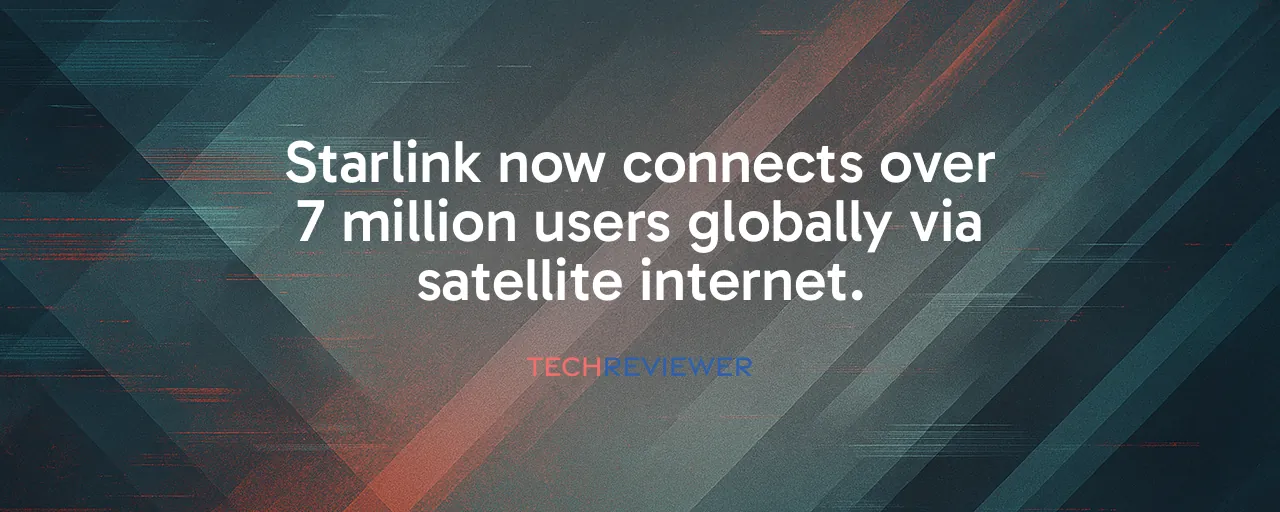A Sky Full of Satellites
On October 19, 2025, SpaceX launched its 10,000th Starlink satellite, a milestone marked by two Falcon 9 rockets soaring from California and Florida. This vast constellation, now two-thirds of all active satellites orbiting Earth, beams high-speed internet to over 7 million users across more than 100 countries. From rural homes to ocean-bound ships, Starlink's network is changing how people connect. Yet, this achievement comes with questions about the crowded skies and their impact on science and safety.
Each satellite, zipping around at 550 kilometers above Earth, delivers up to 215 megabits per second, outpacing rivals like Viasat's 20 Mbps. With approximately 8,664 satellites currently operational, SpaceX's rapid deployment demonstrates its mastery of building and launching at scale. The company's reusable Falcon 9 boosters, one hitting a record 31 flights, keep costs low and launches frequent. But as satellites multiply, so do concerns about what this means for the future of our planet's orbital backyard.
Connecting the Unconnected
For millions in remote areas, Starlink is a lifeline. Farmers in rural Nebraska, nomads in Mongolia, and disaster-struck communities in Central Texas now access reliable internet for work, school, and emergencies. The service's low latency, clocking in at 20 to 40 milliseconds, supports video calls and streaming where sluggish DSL or spotty cellular signals once faltered. In August 2025, Starlink hit 7 million subscribers, with projections eyeing 8.5 million soon.
The U.S. Navy offers a striking example of Starlink's reach. By equipping ships with compact terminals, sailors access cloud-stored files, update cybersecurity patches, and even take online courses while at sea. Plans to outfit up to 200 vessels highlight how Starlink enables flexible, modern naval operations. Similarly, T-Mobile's direct-to-cell service, launched in July 2025 with 657 dedicated satellites, lets standard smartphones send texts in cellular dead zones, including vital 911 messages during Texas floods.
The Cost of a Crowded Orbit
Astronomers are sounding alarms as Starlink's satellites clutter the night sky. Their brightness, often exceeding magnitude 6, creates visible streaks that disrupt stargazing and scientific observations. At facilities like the Vera C. Rubin Observatory, satellite trails ruin images, forcing researchers to toss out data. Radio telescopes, like France's NenuFAR, face interference every 15 minutes from Starlink's signals, threatening studies of cosmic phenomena.
Orbital congestion is another worry. With 145,000 collision avoidance maneuvers in six months, SpaceX's satellites dodge debris constantly. Experts warn that heavily used orbital bands, like those between 400 and 600 kilometers, are nearing critical density. A single collision could spark a chain reaction, known as Kessler syndrome, rendering orbits unusable. While SpaceX designs satellites to burn up on reentry after five years, the projected eventual volume of nearly 10,000 tons of material annually at full constellation size raises questions about atmospheric impacts.
Rivals Struggle to Keep Up
SpaceX's dominance leaves competitors scrambling. Amazon's Project Kuiper, with just 102 satellites as of September 2025, lags far behind, despite contracts with multiple launch providers, including SpaceX itself. Eutelsat's OneWeb, with 648 satellites, targets businesses rather than consumers, limiting its reach. Chinese constellations like Qianfan and Guowang, with 90 and a handful of satellites respectively, face technical and regulatory hurdles, unlikely to challenge Starlink soon.
SpaceX's edge comes from its vertical integration, building everything from satellites to rockets in-house. This slashes launch costs to about $62 million per mission, compared to $150 million for competitors' expendable rockets. Yet, Starlink's urban limitations, struggling to serve areas with over 6.6 households per square mile, open doors for terrestrial 5G networks to compete in cities. Regulatory barriers and high hardware costs, like $599 terminals, also slow adoption in developing nations.
Balancing Innovation and Responsibility
Starlink's success showcases what's possible when ambition meets engineering. Its network empowers users, from airlines like JetBlue to emergency responders, with connectivity that rivals ground-based systems. The T-Mobile partnership, enabling texts on standard phones, proves how innovation can solve real-world problems, like reaching isolated areas during crises. But the service's limits, like weather sensitivity and urban capacity constraints, remind us it's not a universal fix.
The bigger question is how to balance this leap forward with its costs. Astronomers call for better satellite designs to cut light and radio pollution. Regulators grapple with managing a sky filled with 40,000 tracked objects, where Starlink alone accounts for nearly 80% of active satellites. Collaboration on debris tracking, spectrum sharing, and atmospheric research could ease tensions. As SpaceX eyes 12,000 satellites by 2027, the world must decide how to harness this technology while protecting our shared orbital space.
